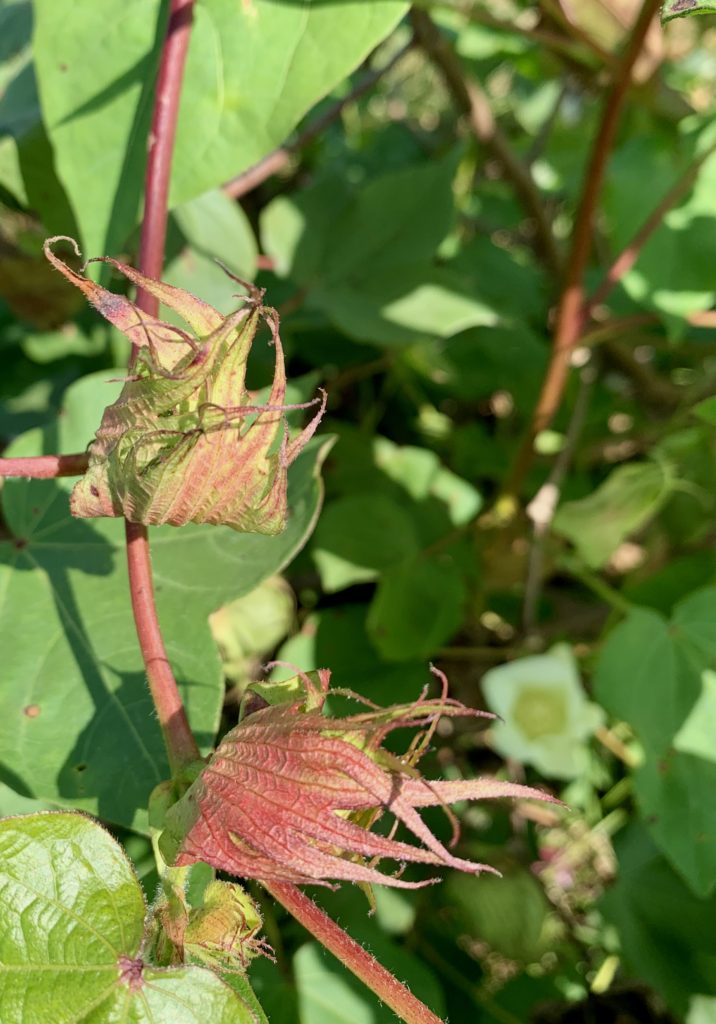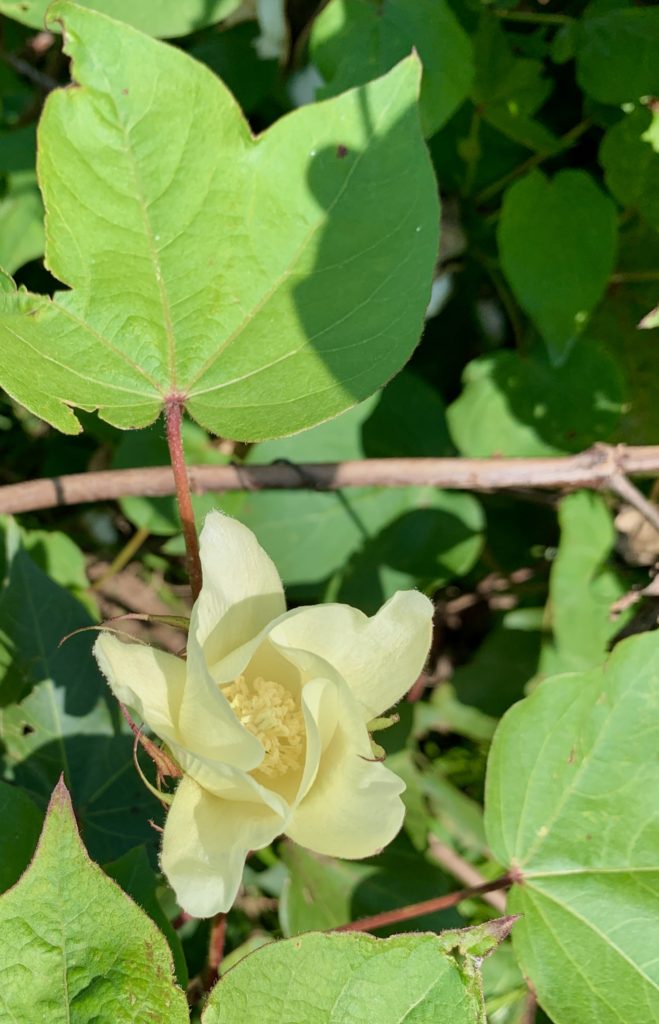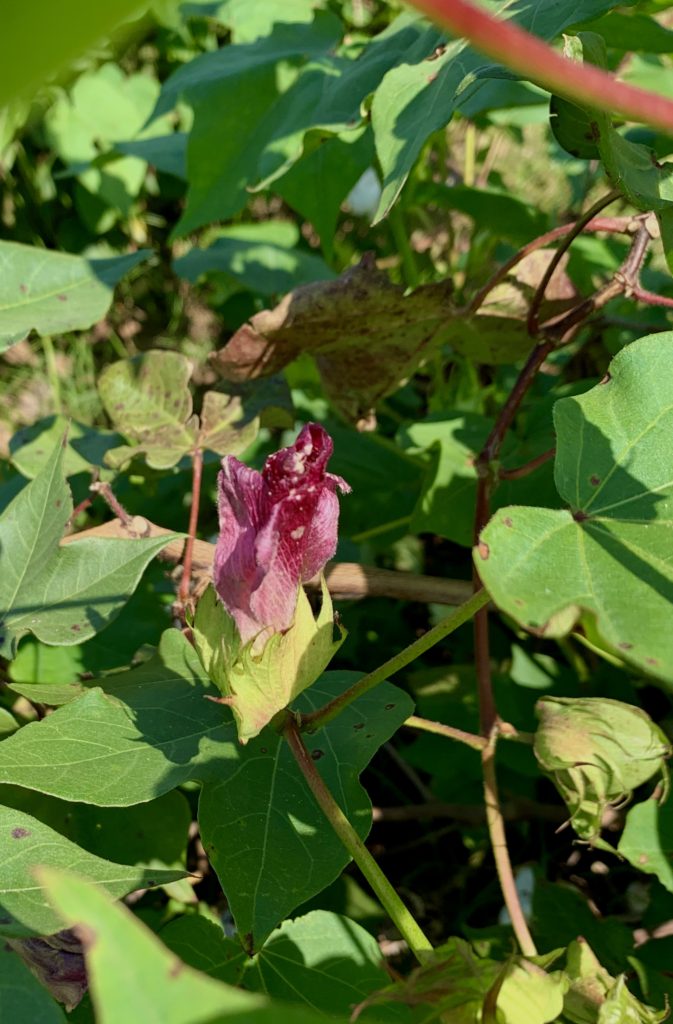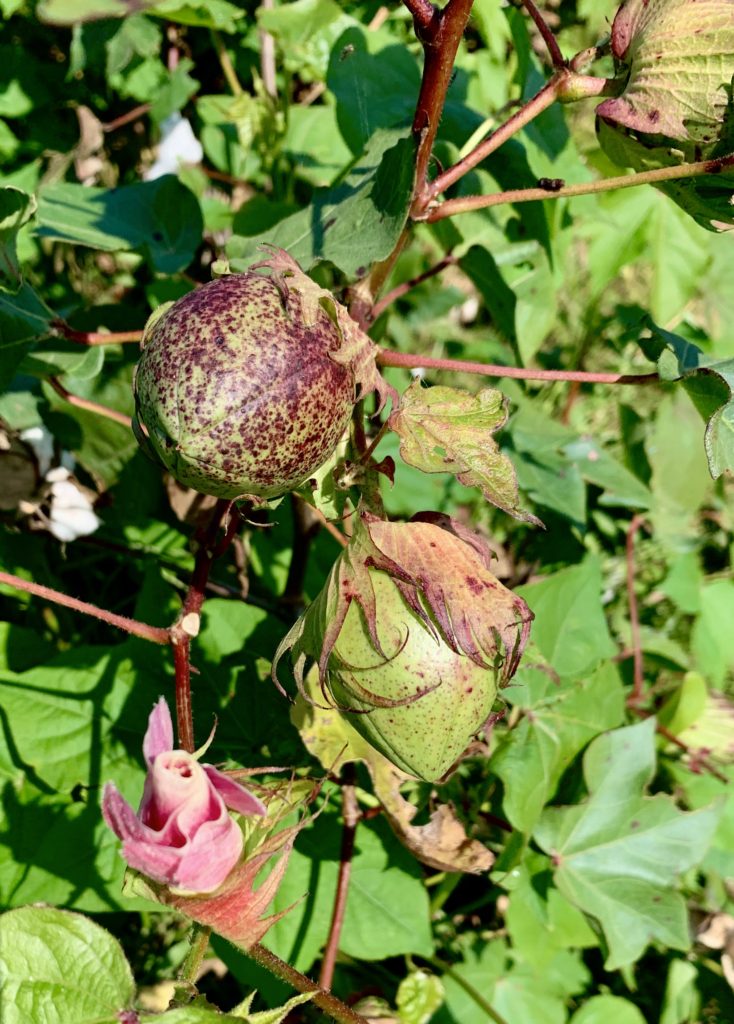“May the Lord cause you to flourish, both you and your children.” (Psalm 115:14 NIV)
We had an unexpected family day this past weekend. Our grown son showed up and the weather was beautiful. We would up at Washington-on-the-Brazos, birthplace of Texas and homestead of Anson Jones (Texas Republic’s last president and architect of the annexation of this great state.) The entire tour was fascinating, but the heirloom cotton fields held my attention the longest. Ever since we moved to Brenham a year ago, I’ve had questions about cotton. My father was a botany teacher, I always have horticultural wonderings. Cotton is prolific in the fields between here and College Station and I’ve watched the crops from the highway through four full seasons, trying to figure out their growth cycle. Yesterday’s living farm experience afforded a conversation with a Texas historian and cotton agronomist. Needless to say, I seized my opportunity while my family rolled their collective eyes. 🙂
First of all, the heirloom cotton was quite tall, taller than me. And sprawling; more like an out-of-control bush than a tame and intentionally planted crop. The rows were ill-defined; heirloom cotton isn’t the same as the uniform variety grown down the road at A & M. The thing that really caught my attention was the great variety of botanical activity on every limb. The reproduction farmer had to come to my aide with explanation.

Turns out, cotton grows in several stages. It starts out as a square. That looks just like it sounds: a neatly folded box of leaf from which a flower will one day emerge.


The flower blooms yellow-white, wound tightly until they unfurl like a flag. They remind me a bit of squash flowers. Over time the light-colored petals give way to purple. Eventually they shrivel up and fall away, leaving the tiny bud of a hope of a boll behind. The small green nob grows over time, from the size of a pea to the size of a small child’s fist, gaining coloration that resembles both a peony bulb about to bloom and a ripe pomegranate.

The heirloom cotton expert tells me that at this point the cotton is in the boll: not yet ripe of course. If we cut the boll open prematurely, we’d find a sticky, white substance, not yet cotton at all. Left unbothered, the boll carries out it’s purpose; drying, cracking and eventually exposing it’s treasure to the elements. The pure white cotton remains, ready for retrieval and so many uses.
My biggest question remained: the field was full of plants experiencing all six stages of growth and development. My corn and bean brain could not compute. When exactly was harvest?

The patient cotton-farmer-field-teacher explained it. Originally, cotton harvest was continuous: from June/July through September/October. A single cotton bush could produce three or four harvests in a single growth season. Frost alone is the finisher of the cotton harvest, and of course the insidious boll weevil. (We always have an enemy, don’t we?) Cross-breeding and genetic alterations have moved modern cotton to a single annual harvest, now all accomplished by machine in a matter of hours. Heirloom cotton requires hand-tending and picking, day after day, month after month throughout it’s growth season.
There was something beautiful and biblical about that heirloom cotton field. Though we look for a field ripe for harvest (John 4:35), we often fail to realize that believers mature at varying rates. We get impatient and want to rush or control the process. But flourishing is a fight, and we each reach the next stage of growth at our own individual pace. Just as the field was full of squares and flowers and bolls in different phases, so are our churches. Celebrate it. Appreciate the stages of growth and delight in the ongoing harvest. We grow for His glory!

“But grow in the grace and knowledge of our Lord and Savior Jesus Christ. To Him be the glory both now and forever! Amen.” (2 Peter 3:18 NIV)
Lord, give us patience as we realize there are stages in our spiritual growth. We learn from the heirloom cotton that natural growth is varied, unkempt and beautiful. Help us revel in the process; delighting in the pre-believer and the seasoned saint alike. May we not be afraid to get our hands dirty as we tend to the field, especially tender with all maturations of faith. We are thrilled to witness what You are accomplishing here on earth. Amen.